Popular:
Popular:
Following the end of WWI and Germany’s centrist government being forced to sign the humiliating Treaty of Versailles, all Germans, no matter their political background, come to resent this treaty. It punishes Germany by forcing it to pay for reconstruction and reparations to the allies, who won WW1. Debts soon mount, creating hyperinflation and economic ruin. Germans are losing their jobs and savings and can’t even afford bread.
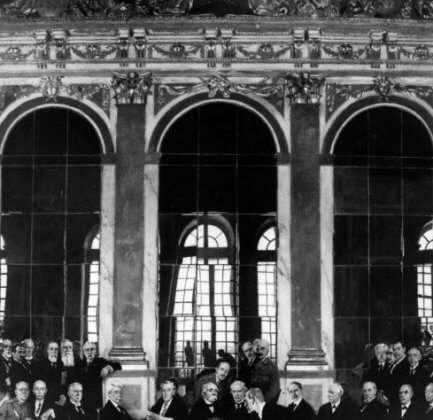
As the Weimar Republic failed the people by signing the Treaty of Versailles, they are solely to blame for Germany’s economic collapse and the people’s suffering. Everyone, especially the lower middle class, farmers and nationalists, should feel angry at the tax increases, salary cuts, more than 30% unemployment rate and bankruptcies. Only the far-right German Workers’ Party can be trusted to save the country from this economic and moral crisis.
This new, easily excitable speaker named Adolf Hitler is spewing empty rhetoric and hatred. Through his 25-Point Plan, which is anti-foreigner and anti-Semitic, he is manipulatively trying to appeal to socialists by including several tempting measures that promise to redistribute income, introduce profit-sharing in large industries, nationalize trusts, provide free education and increase old-age pensions. It is questionable whether he is to be believed, and the socialist see he doesn’t really share their values, but he can certain whip crowds into a frenzy.
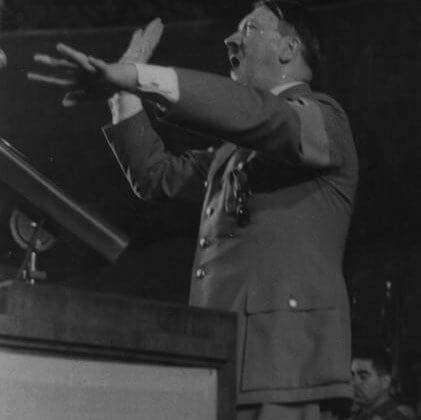
Hitler’s spellbinding oratory skills have inspired loyalty, transforming the German Worker’s Party from a small discussion group into a serious, organized political platform. Thousands now come to hear his emotional and captivating speeches, and his 25-Point Plan is especially exciting, since it forcefully refuses to accept the terms of the Versailles Treaty and calls for the reunification of all Germans. It’s time someone puts nationalism first, and Hitler’s promise to reunify all German people by granting civil rights only to German citizens is not only welcome but inspiring.
The German Social Democrat Party (SDP) currently makes up the largest political party in Germany, which is why Hitler is manipulatively and hypocritically trying to appropriate the social political philosophy and even the word “social” into his party’s new name. But Hitler can’t really win over the socialists in Germany given that he publicly expresses his hostility to core socialist ideas, such as racial or sexual equality.
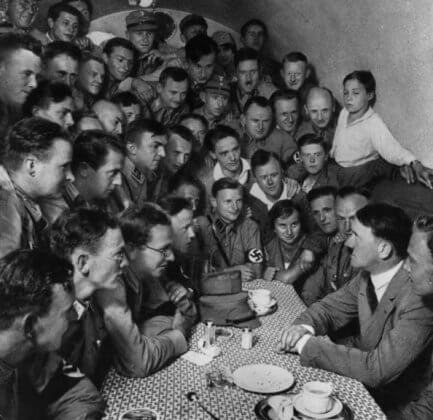
Changing the party’s name to the National Socialist German Workers Party (NSDAP), also referred to as the Nazi party, shows just how smart he is, attempting to redefine socialism by putting “national” before it. To further emphasize Aryan descendance, he also adopts the 5000-year-old symbol of good luck, the swastika. It’s only right that Hitler takes charge of the growing party, seeing as how he’s the one who is leading the charge to fight for equality of “German blood.”
Despite the weakened state of the Weimar government, it is quite shocking that the fascist movement thought it could pull off a successful coup d’etat of the Bavarian government (the Munich Beer Hall Putsch). After all, the Nazis are only a marginal phenomenon consisting of violent street thugs. The fact that Hitler subsequently only got a five-year jail sentence raises suspicion of Nazi-sympathizers within the high court considering that he was found guilty of high treason. At least, Hitler’s NSDAP party is banned.
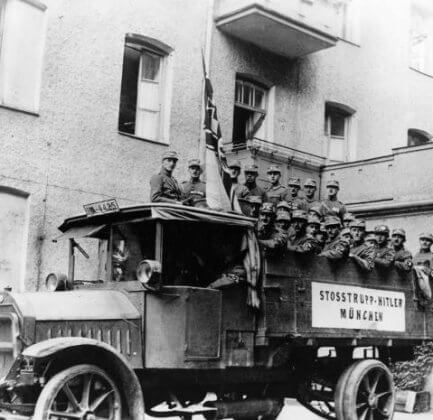
Inspired by Italy’s Mussolini, Hitler acts bravely, trying to lead a revolution on behalf of the German people against a looming communist and liberalist threat and against the federal government that had betrayed the country by signing the Versailles Treaty. Though the coup fails, Hitler impressively turns his consequent trial into a grandstand for his ideas, becoming even more well-known across Germany. He also realizes from this defining moment that he’ll need to use constitutional means to take power.
Though released from prison after just half a year, Hitler is thankfully still banned from public speaking until 1927. Unfortunately, his disorganized, repetitive, long-winded and hard-to-read memoir, “Mein Kampf,” which he wrote in prison, is published, outrageously attacking the parliament of the Weimar Republic, social democrats, Marxists and Jews as corrupt opportunists.
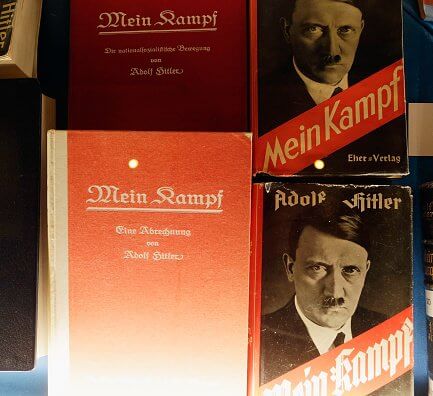
It’s no wonder that Hitler’s “Mein Kampf” takes Germany by storm. His stated intention to destroy and overhaul the broken parliamentary system is exactly what’s needed, given how corrupt and morally debase the parliament of the Weimar Republic is. His stirring philosophy, that Germans are a superior Aryan race that needs to protect itself from external threats, is increasingly resonating with many readers who were craving a strong leader.
The fallout from U.S. Stock Market Crash together with the growing popularity of the Nazis cause more German capitalists to take notice of them. German industry and finance leaders now fear a workers revolution in the country, and are willing to align with the Nazis, who talk of smashing the labor movement (and their threat of unionized workers). It’s also safer for capitalists to agree with the Nazis that foreigners are the enemy of everyone’s current economic struggles, not Germany’s business leaders.
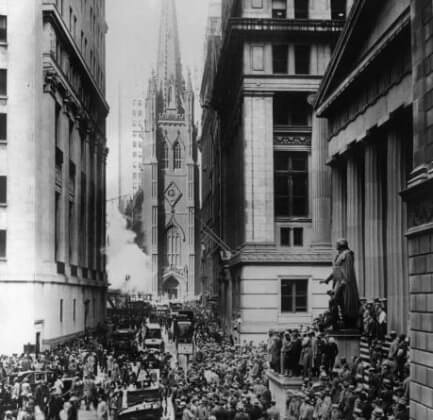
As if innocent Germans haven’t suffered enough because of Versailles, now the Stock Market crash will cause even more economic distress in Germany, as the country has been forced to become too dependent on America. As unemployment and poverty skyrocket, Nazis promised industry leaders a defense against unions so that the economy can keep on moving forward. Germans spend hours in soup kitchen lines losing all hope in the capitalist system, the Nazi party offers a sympathetic platform, making sense of the madness by pointing out that the Jews, Marxists and parliamentary system are responsible for bringing a great nation to its knees.
The Nazis unfortunately manage to collect more votes from the demoralized masses following the U.S. stock market crash and become the single largest party in the Reichstag. However, thankfully, they don’t have the larger presence in parliament. The German Communist Party (KPD), which also increases its votes, combined with the Labor movement, represent a bigger political force. They also exert visible street presence, organizing demonstrations and engaging in physical confrontations with the Nazis. The end results are a sign that Germany can stand up to the Nazi wave.
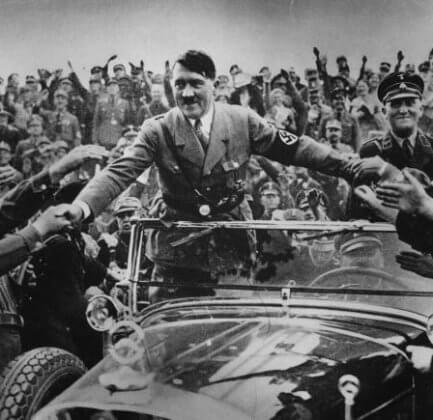
The Nazis become the right answer to a variety of groups and win the largest vote in the election (though they don’t have a majority). They appeal to employers who fear the labor movement, they promise business owners to squash any workers revolt. The Nazi party also takes under its wing the impatient youth and the unemployed, promising to rectify their desperate situations. Hitler’s party manages to become a mass movement within a few years. Hitler’s power yielding Storm Troopers alone, reaches four hundred thousand members by 1932.
The moderates want to keep us Communists out of parliament so they persuade President Hindenburg that Hitler should be made chancellor. He does not trust Hitler but they thought that he can be controlled. They are proven wrong when, on his first day as chancellor, Hitler manipulates Hindenburg into dissolving the German parliament (Reichstag) and calling for the new elections for March 5th. His intent is now clear: to establish a Nazi majority in the Reichstag and make any laws he wants. Unfortunately, a lone, misguided Communist sets fire to the Reichstag, playing right into the hands of Hitler.
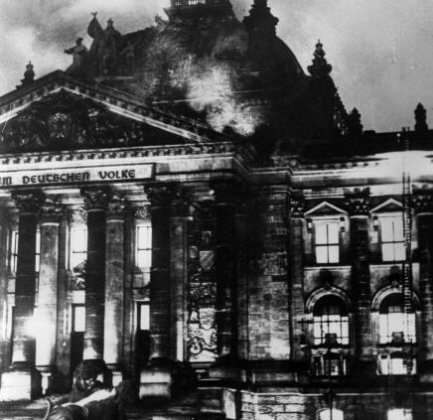
Sworn in as the rightful chancellor, Hitler succeeds in wielding his power for the good of nation-building. The very next month, with elections looming, the Reichstag burns, proof of evidence of mass Communist intent. Hitler needs to protect the country with a strong, steady hand. He ends civil liberties and limits political parties in Germany. To protect his party and the parliament, Nazi repression of and brutal attacks on the Communist party follow. The Nazi’s fight against the labor movement is also justified, as Hitler needs to ensure that any hints of a leftist revolution will be squashed.
Despite violent Nazi repression of the Communist and Labor parties, they still receive 12.3% and 18.3% of the election votes, respectively. Unfortunately, these figures are meaningless, as the Communists are banned from parliament, with most deputies either bravely resisting underground or sadly arrested by the Nazis. Also unfortunate is that to save their own business interests, Labor’s bourgeois members vote for Hitler’s ominous Enabling Act, which makes him dictator for four years, though Hindenburg remains president. It also gives Hitler’s Cabinet the right to pass laws contrary to the constitution, which he immediately sets into motion by abolishing the powers of the states and the existence of non-Nazi political parties and organizations.
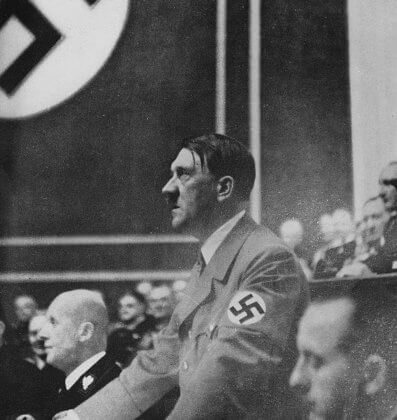
Though the Nazis surprisingly did not receive an absolute majority in the elections, they’re still able to form a cabinet together with a right-wing party. Proving that his anti-Communist rhetoric is justified after the Communist arson attack takes place at the Reichstag, Hitler stabilizes a country in chaos by passing his important Enabling Act. He will now be the country’s devoted ruler and able to officially rid the parliament of parties that don’t have a nationalist Germany’s best interests at heart.
Resigned and devastated, the Labor and Communist (SPD and KPD) party leadership decide to relocate to Prague where they can operate in exile, after it becomes clear that they are powerless to stop Hitler and his Nazi party’s assumption of power. Many members courageously remain in Germany to resist in underground groups. With the Labor party declared illegal in June, Germany’s downward spiral towards a fascist dictatorship is officially inevitable.
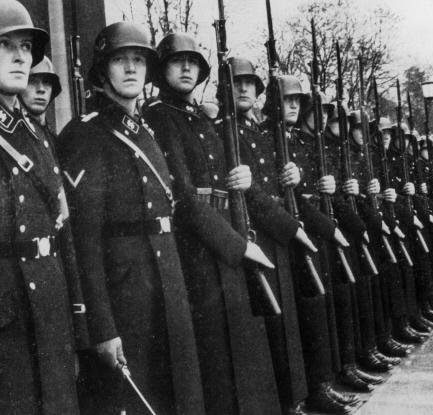
Creating a unity needed to fulfill Hitler’s election promises, he sends in armed SS and SA to systematically destroy any remnants of the labor and communist movements is necessary in order to continue toward the Nazis’ larger goals: the re-arming of Germany in preparation of a necessary war to regain lost territory and the destruction of all enemies of the Aryan people.
Hindenburg’s death leaves the leadership stage to Hitler alone. By now, the Labor party’s (SPD) underground resistance activities have sadly all been thwarted and there is no longer hope for a counter-revolution since the Nazi regime has unfortunately become too popular with too many Germans. Many people who disagree with the Nazi party have no choice but to leave Germany. Fear and uncertainty are left for those who non-Nazi supporters who remain.
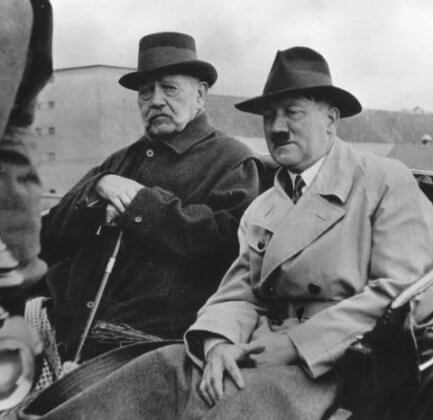
The death of Hindenburg is a technicality, as Hitler has been acting as Germany’s true, respected leader since the previous year. Open support for Hitler comes from every direction. Industrialists, bureaucrats, and even literary and intellectual figures join in on the pervasive energy and optimism that fills the air at constant Nazi rallies, parades, marches in support of the Hitler and his Nazi party.
